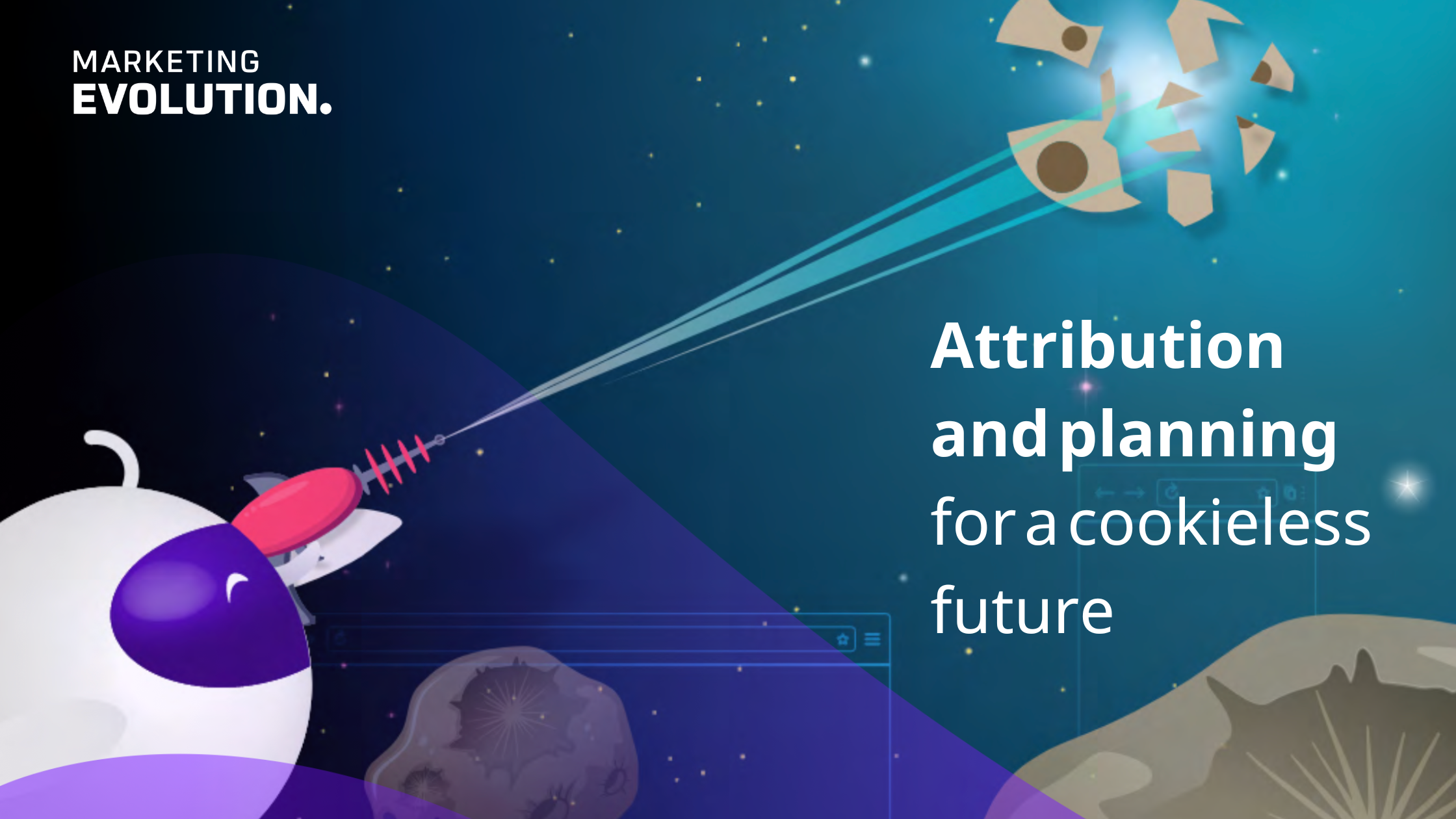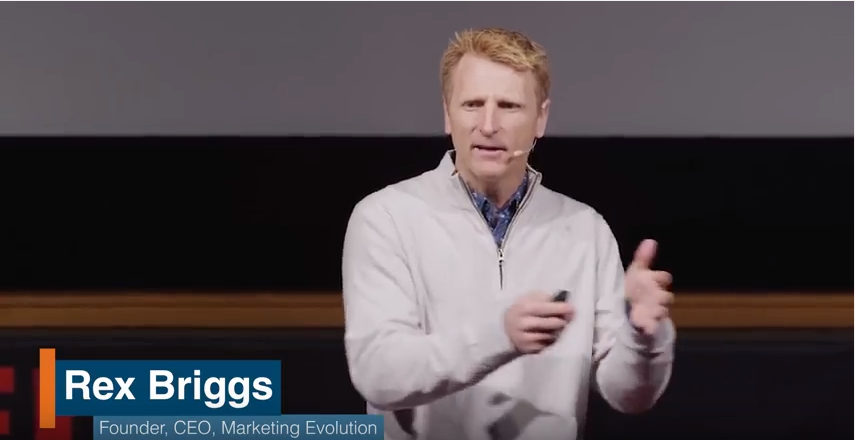How Cookieless Tracking Will Affect Your Attribution and Analytics Strategy
The time to pontificate about how your business will navigate a cookieless future is over.
Over the next few years, due to the privacy changes initiated by Apple and the changes in user level tracking introduced by Facebook and Google, many of the most common avenues that marketers have used for the last decade to collect user data will disappear. However, the decline of the third-party cookie is one of the most significant and immediate changes taking place today.
These changes have sent today’s modern marketer scrambling. Many have spent a decade or more learning the ins-and-outs of digital attribution, struggling to keep pace the entire way. Right now, only a mere 11 percent of marketers believe they are “excellent” when it comes to measuring marketing performance in the era of granular data – and now more than ever,they are feeling the pressure to prepare for all the unknown elements that are associated with cookieless and data privacy.
But these industry changes actually present an opportunity. Marketers who proactively craft a strategy to prepare for the absence of cookies and hyper-personalized targeting will pay dividends in the future, as it will give their organization a first-mover advantage. However, before we dive into future-proof solutions for this strategy, let’s go over why the shift to cookieless is occurring.
What are Cookies?
There are two kinds of cookies: First-party cookies and third-party cookies. This makes “cookieless” a bit of a misnomer – while third-party cookies are quickly becoming a relic of history, first-party cookies are as important as ever.
First-party Cookies
First-party cookies are typically used to improve a user’s browsing experience. For example, many people use first-party cookies every day in the form of autofill, which lets them quickly fill out a form or enter their login information. With these cookies, only the user and the website have access to the cookie – outside advertisers cannot access this information.
Recently, Google reassured internet users everywhere that they had no quarrel with first-party cookies, meaning these convenient data stores aren’t going anywhere for quite some time.
Third-party Cookies
Advertisers are the primary users of third-party cookies, as they provide a phenomenal way to track user activity. When a user accesses a website, both parties get a cookie. Then, the website may choose to share the cookie with advertisers, allowing them to gain more information about where the consumer has recently been online and what they did on those websites. By linking a series of cookies together, you can get a very in-depth view of an individual’s online activity.
Due to increasing consumer awareness around data privacy, this type of cookie’s fate is all but sealed. Today, most major web browsers – including Chrome, Firefox, Safari, Edge, and Brave – have made a commitment to phase out third-party cookies by 2022 or earlier. This means marketers need to adapt quickly.
Why Do Cookies Have a Bad Reputation?
Third-party cookies have been around since 1994 – so why did it take decades for consumers, businesses, and regulators to snub these sources of digital data?
There are two primary reasons: Security and privacy. First, with an increasing number of data breaches originating from around the world, consumers are rightfully concerned about who has their personal data and how it is being protected. To these consumers, third-party cookies are another vector of risk. Second, many consumers are becoming far more privacy-conscious, and are uneasy with how much advertisers know about them. To put it bluntly, they found the capabilities of third-party cookies to be creepy.
Combine this environment with cookies being a household name, and they quickly became an easy target for consumers, businesses, and regulators to denounce. However, thankfully for marketers, there are many alternative ways to track consumer activity – but implementing them can take time.
Getting Started with Cookieless Tracking and Analytics
The end of third-party cookies doesn’t mean the end of tracking. While they may have been an important tool for yesterday’s marketers, they’re not irreplaceable. There are many alternative ways to source and analyze consumer data for targeted campaigns – and the best methods for future-oriented marketers don’t need cookies to be effective.
This means the shift to cookieless won’t only require a few small pivots to your strategy. Rather, start thinking of how to transform it to be more compliant with all kinds of privacy changes in the future. Here are a few options to consider in your forward-looking strategy.
Focus on First-party Data
First-party data will help you build direct relationships with consumers who already consented to sharing data with you. To collect first-party data, simply ask a customer to share information in exchange for a benefit. For instance, many online retailers will give users free shipping if they share their email.
However, keep in mind that data quality will be paramount – more isn’t always better. Ask yourself a few questions before asking consumers for information: How does the data provide value? What risks are involved in storing it? Do you have methods to securely share that data within your organization? If you can answer all of these questions with confidence, it’s worth asking the user to share the information.
Test and Learn
It’s helpful to have a lot of insight into customer behavior before you launch your campaign, but you can gain important data about customer behavior through experience too. “Test and learn” is a marketing practice adopted by many consumer-focused companies to test a marketing hypothesis through a small sample campaign.
So, if you hypothesize that women over 35 like your product more than the general population, you could launch two campaigns in a similar geographic area – one for women over 35 and another untargeted campaign – and see whether or not your prediction is true. From there, you can invest your marketing funds accordingly. This method doesn’t require much in the way of personal information, making it ideal for a cookieless future.
Leverage Connected TV
Connected TV (CTV) has shown ever increased adoption among marketers since its inception, but CTV is in a unique position due to the move toward cookieless. Connected TV providers like Roku, Apple TV and Chromecast can provide marketers with precise targeting data, helping you better understand how your media buy is affecting purchasing decisions at a household level.
Additionally, these providers are often happy to work with your first-party data to ensure your media buys get into the right households and can even share information about who were exposed to the ads. With these highly granular insights available via CTV, it’s highly probable that it will soon be able to match – or even surpass – the digital measurement capabilities marketers had during the heyday of personalization.
Use De-aggregation Solutions
Marketers should search for a solution that provides an option to connect aggregate data to user-level insights, allowing for more granular targeting. This practice, called de-aggregation, is fairly new to the world of marketing analytics but will become increasingly useful in the cookieless future. This practice works by taking aggregate data and associating it to general customer identities through processes like matching and normalization, protecting consumer privacy while providing vital insights into marketing performance.
You won’t know exactly who the customer is, but you will know important details about their audience demographic traits – like their age, gender, education, income, and more. For example, de-aggregation could reveal that the majority of engagements on your recent media buy came from millennial women on the East Coast who own a bike. This provides crucial context that many marketers will be missing when they lose access to third-party cookies.
However, be discerning – the platform must be able to function with a high degree of accuracy with only aggregate data. This is because the future of data privacy is difficult to predict, and user-level data may fall entirely to the wayside in the coming years.
Conclusion: Cookieless is Here to Stay
Cookieless and other privacy developments are likely to make it more difficult to track user behavior across a wide array of platforms. This makes it abundantly clear: Marketers must change how they approach measurement, or risk falling behind in an incredibly important facet of marketing.
To stay ahead of the curve, start investigating strategies and solutions that will help you keep pace with the changes and provide the most accurate performance measurement possible without compromising privacy. Marketing Evolution, for example, is outfitted with a range of capabilities – such as flexible, responsive analytical processes, de-aggregation capabilities, data quality checks, and more.
Ready to start preparing for cookieless? Begin by signing up for the pilot program of our marketing performance measurement solution to see exactly how we can help.





















